GwinnettForum | Number 23.14 | Feb. 20, 2024
COMING TO OLD TOWN LILBURN will be a 266-unit apartment building with shops below. It will be between the center of town and the railroad. A parking deck will also be built, consisting of 700 spaces for tenants and visitors. All this is being developed by Range Water Real Estate of Sandy Springs. For more detail, see Upcoming below.
TODAY’S FOCUS: Elevate your garden’s beauty this spring
EEB PERSPECTIVE: Helping immigrants move toward self-sufficiency
SPOTLIGHT: Howard Brothers Outdoor Power Equipment and Hardware
ANOTHER VIEW: Book Review: Gwinnett: A Little Above Atlanta
FEEDBACK: Would like for quilts to have dates they were made
UPCOMING: Residential complex planned for Old Town Lilburn
NOTABLE: Use county police precincts to conduct e-commerce
RECOMMENDED: The Metamorphosis by Franz Kafka
CRITIC’S CORNER: Five short run shows coming to the Fox Theatre
GEORGIA TIDBIT: The Abrupt End of the Canal Era in Georgia
MYSTERY PHOTO: See if you can identify this unique bridge
LAGNIAPPE: It takes lots of hands to hold Duluth awards!
CALENDAR: Prominent authors talk at the Hooper-Renwick Feb. 22
Elevate your garden’s beauty this spring
By Matthew Tuel
Founder, Red Cedar Landscape Architecture
DULUTH, Ga. | With spring around the corner, your garden plants are getting ready to “wake up.”
Now is the best time to start tackling any of these four simple projects that could spruce-up your yard. Most of these can be accomplished over a weekend.
The first project to undertake is cleanup. Do this before your shrubs and trees start to flush-out their new leaves. Start with pruning overgrown and dead branches out of your shrubs and trees. Also remove any tree branches that are within 12 feet of your home. (Call an arborist if you want to hire this out).
Next, refine your existing planting bed edges using hand tools or a string trimmer to cut into the intended edge of your lawn. Top-dress mulched areas with fresh material, to a depth of no more than three inches. Remove old built-up mulch as needed. Install seasonal color and small perennials after mulching.
If your lawn is looking tired, remove the lowest branches from over-shadowing trees to help more light reach the turf.
If your driveway and paths are dirty, power-washing is not only an easy way to shine-up your home’s exterior. It is also satisfying to watch or do yourself.
Now that your outdoor space is cleaned up, let’s find some furniture to sit and entertain with. Look for outdoor rated furniture that fits your style and budget. Start with a small dining or seating set, and gradually add more as-needed, based on your lifestyle.
Don’t forget about your cooking appliances. These should be placed convenient to your back door, but far enough from structures to avoid heat and smoke damage.
The space is really shaping up now that we have placed our furniture, we can now move on to container plants, which we can use to provide accents of color and texture. There are a wide variety of containers available, something for every space. Mix and match to add variety.
After bringing home your containers, place them where you ultimately want them. They will be heavy once planted. Fill the containers with potting soil until it is one inch below the rim. Choose one plant that has a vertical growth habit, a “thriller,” which will go in the center of the pot.
Surround that with a mix of “chillers,” which have a low or mounded habit, and “spillers,” which like to spill out of the pot as they grow. Use no more than three different flower colors, and two different leaf colors. Sometimes less is more.
For cool season grass such as Fescue, you can over-seed in the early spring to fill-in thinned-out areas. For warm season grasses such as Bermuda or Zoysia, sod and plugs are more effective at re-establishing lawn. Sod is instant, while plugs require patience over more than one growing season. Always keep the soil moist after seeding and sodding. Expect to water new lawns as often as daily for the first six weeks.
If you are ready to make some quick changes to your garden but are still unsure where to start, a qualified landscaper will be able to help. Projects that require more advanced planning or permitting such as swimming pools, pavilions, decks, and drainage, are best handled by a licensed Landscape Architect.
- Have a comment? Send to: elliott@brack.net
Helping immigrants move toward self-sufficiency
(Editor’s note: Nonprofit organizations have become a major factor in Gwinnett life, plugging holes for the community. One example is Corners Outreach, which has been incorporated since 2010. Learn about their work today.) -eeb
By Elliott Brack
Editor and Publisher, GwinnettForum
FEB. 20, 2024 | Larry Campbell recognized that education for immigrant children without financial stability for the family doesn’t work. He’s president and CEO of Corners Outreach, based on Shackleford Court in Norcross, downhill from the Vietnam Church on Beaver Ruin Road.
![]() A native of Nashville, Tenn., Campbell, soon to be 72, now lives in Berkeley Lake. He is a graduate of Middle Tennessee State University. He had a 13 year career managing large operations for Union Carbide before moving to Atlanta for the warmer climes. He founded a technology consulting company, which he sold in 2016. He was one of the founders of Corners Outreach Church, back in 1991 on Medlock Bridge Road.
A native of Nashville, Tenn., Campbell, soon to be 72, now lives in Berkeley Lake. He is a graduate of Middle Tennessee State University. He had a 13 year career managing large operations for Union Carbide before moving to Atlanta for the warmer climes. He founded a technology consulting company, which he sold in 2016. He was one of the founders of Corners Outreach Church, back in 1991 on Medlock Bridge Road.
The Corners Outreach 501(c)3 nonprofit started in 2010 to focus on Title I elementary school students, giving them after-school and summer help. Later it expanded to all grades, and today serves nearly 1,000 immigrant students. But soon Larry began to understand Corners Outreach had to pivot to serve the whole immigrant family to move beyond dependency on relief to economic self-sufficiency.
Larry found out: “We surveyed our community, and learned that many of the men had experience in the landscape business. So we started a company, Lawncare With a Purpose, paying these workers a living wage. We start out at $15 an hour, and they can work up to $28 an hour, for a 40 hour week, and paid time off for holidays. It now employs over 100 workers. Many were astounded to find that when they had holidays, they got paid for a full eight hours.”
These workers can be home with their families on Saturday. Campbell says: “We also employ many of their wives with sewing capabilities. During the pandemic, we employed women in making Covid masks. We now employ women to drive vans to pick up kids. The women also do the cleaning of our buildings.”
Grants and contributions help fund the non-profit. In addition, when lawn care customers pay for their services, 10 percent of that money goes to the non-profit, creating a self-funding mechanism. Campbell call this “asset-based community development.” He feels: “This is a big deal, for it forms a funding mechanism for other projects.”
Corners Outreach listened to its teenagers. From this, they began a staffing company. It placed 54 persons last year, many in health care, and hope to go over 100 this year. Campbell remembers: “As an example, one business said that they could not find a bi-lingual receptionist, so we found them one. Companies are pleased to get our youth, for they understand work.”
Corners Outreach non-denominational church meets at their building. Campbell is one of the elders, along with Jose Vichez, 51, and Hector Felix, 59. The church employs its own minister. Sunday’s attendance averages about 100, mostly-immigrant families.
With the after school and summer school programs, included is tutoring of students, plus giving help in music, arts, sports and early and high school education. A big victory for this program was getting the Gwinnett Board of Education buses to drop off students at Corners Outreach. Besides after school education at the corporate headquarters, Corners Outreach also tutors at two off-site locations, on Jimmy Carter Boulevard and Peachtree Industrial Boulevard.
Corners Outreach has a $4 million budget from grants and contributions. Its focus is on skill development, giving individuals, family and the wider immigrant community what they need to move to economic self-sufficiency. That includes education, job creation and training, job search skills and financial counseling. Eventually, they hope to see the family move into home ownership.
What a goal! Attaboy, Corners Outreach!
- Have a comment? Send to: elliott@brack.net
Howard Brothers
 The public spiritedness of our underwriters allows us to bring GwinnettForum.com to you at no cost to readers. Today’s sponsor is Howard Brothers Outdoor Power Equipment and Hardware. John and Doug Howard are the “brothers” in Howard Brothers. This family-owned business was started by their dad, and now John and Doug’s children are helping to lead in the business. Howard Brothers has locations in Alpharetta, Athens, Doraville, Duluth, Lula, Oakwood, and now store no. 7 in Dallas. They specialize in hardware, outdoor power equipment and parts and service. Howard Brothers are authorized dealers of STIHL, Exmark, Honda, Echo, and other well known brands in the green industry. Howard Brothers is also an authorized Big Green Egg dealer, and is one of the only Platinum Traeger Grill dealers in the state of Georgia.
The public spiritedness of our underwriters allows us to bring GwinnettForum.com to you at no cost to readers. Today’s sponsor is Howard Brothers Outdoor Power Equipment and Hardware. John and Doug Howard are the “brothers” in Howard Brothers. This family-owned business was started by their dad, and now John and Doug’s children are helping to lead in the business. Howard Brothers has locations in Alpharetta, Athens, Doraville, Duluth, Lula, Oakwood, and now store no. 7 in Dallas. They specialize in hardware, outdoor power equipment and parts and service. Howard Brothers are authorized dealers of STIHL, Exmark, Honda, Echo, and other well known brands in the green industry. Howard Brothers is also an authorized Big Green Egg dealer, and is one of the only Platinum Traeger Grill dealers in the state of Georgia.
- Visit their web site www.howardbrothers.com.
- For a list of other sponsors of this forum, click here.
Book Review: Gwinnett: A Little Above Atlanta
Editor’s Note: We were surprised and flattered to receive this unsolicited review. Thank you, Rick.—eeb)
By Rick Krause
LILBURN, Ga. | The author disdains self-promoting, but this is not about the author so much as it is about the book.
And yes, he should be lauded for his efforts, and I believe that I am doing that in this recommendation. He’s done an excellent job. But it is about the book, non-fiction obviously, a splendid and exhaustive history of Gwinnett County, that I’d like to discuss.
Yes, it’s a history, but a lot of that is storytelling, which I found so fascinating. One might not think that this could possibly be a “page-turner” like a who-done-it murder mystery, but I found myself following along with the telling of the history eager to read on. often I flipped pages to see what might be ahead.
I never skipped those pages; I pretty much read the entire book. And it is a tome, having more than 580 pages of main text, and together with the first appendix, which actually is similar text contributed by other writers and historians, bringing the text to a total of about 650 pages.
In addition, there are about 175 more pages of Appendix data—facts, figures, statistics, names, places, and such. And it has a thorough index. As such, it is both storytelling and a reference book, much like those must-have encyclopedic books of old, those so common before the Internet.
And don’t think Google or any other search engine could produce this amount of material from the web. The author did not compile this compendium from the internet, because most of it is not there. Instead, he dug through what was, and is mostly paper records, and he interviewed people. Accordingly, the book is quite unique.
That brings me to a point about the medium of the book. I have the paper print book, and after reading, would find it easy to use as an off-the-shelf reference; I don’t think that eBooks can duplicate that. In fact, the tables that are included in the appendices in the printed book could not be formatted for the eBook. That’s missing a lot.
What I found most interesting in reading the book was learning what Gwinnett County first was: largely farming, chiefly cotton, with a few scattered towns. Lawrenceville, became the seat, being the oldest and for years the largest, with a couple of rail lines going through it. I was intrigued regarding the cotton farming because of my interest in the flora of the area and what natural, native plants have survived the plow.
I was fascinated in how Gwinnett County growth proceeded along from some rather fortuitous circumstances. It was northeast of the large Atlanta metropolitan area, and its international airport; it had a lot of open farmland and scattered timber acreage. Then, some visionaries who saw the potential, bought and developed land, some making a fortune, and their giving back to various groups philanthropically. That was in the relatively recent era of the explosive growth in the 1960’s through 1990’s. But even before that, in the late 1800’s, there was the hugely successful tannery industry in Buford.
It’s all in this book. But it’s so much more. Although the book ends in its coverage in 2008, most of what Gwinnett has gone through is covered in the book, as well as the many superlatives—fastest growing, most diverse, best school system, and more. However, Gwinnett’s stumbles and even its dark past are also laid bare in this complete book. It truly is a page-turner; I highly recommend it.
- Have a comment? Send to: elliott@brack.net
Would like for quilts to have dates they were made
Editor, the Forum:
![]() Your article on quilting was most interesting. Molly and I have three special quilts. One made by my paternal grandmother, Minnie Titus, is in a pattern known as Grandmother’s Flower Garden. Another is by Molly’s mother, Gertrude Toal, and is a pattern known as Log Cabin.
Your article on quilting was most interesting. Molly and I have three special quilts. One made by my paternal grandmother, Minnie Titus, is in a pattern known as Grandmother’s Flower Garden. Another is by Molly’s mother, Gertrude Toal, and is a pattern known as Log Cabin.
The third is one, known as a friendship quilt, was put together by Molly. Each member of a large sewing group created several personal squares which were then shared with members of the group. Each member created their own quilt by putting together all the squares which had been created.
As a couple of amateur genealogists, we both wish that the creators of those old quilts had put the dates on which they were made.
– John Titus, Peachtree Corners
Defining “remnant” in political terms
Editor, the Forum:
Let me take exception to a comment from Ashley Herndon.
Remnant: “A small remaining quantity of something. In Christian Theology a small minority of people who will remain faithful to God and so be saved.”
Mr. Herndon is incorrect in his use of the word remnant to refer to the current Republican Party. It is now Mr. Trump’s party and they seem to be the majority of that Party. The leaders and backbenchers do his bidding out of loyalty or fear. The remnants of the GOP are the ones leaving, e.g. Mitt Romney, Mike Gallagher, Cathy McCorris, Patrick McHenry. More importantly, many thousands of people across the country have quit the GOP and registered as Independents.
The term remnant belongs to that “small remaining” group, faithful to Conservative (classical Liberal) ideas. This remnant is committed to supporting and conserving self-government and the Constitution that codifies those ideas in law.
– Theirn Scott, Lawrenceville
Jimmy Carter, in hospice, is our oldest living president
Editor, the Forum:
President Jimmy Carter continues in hospice. He’ll be 100 years old on October 1, 1924. This easily makes him the oldest president in history. Ronald Reagan was the longest living president until Carter.
Jimmy Carter was the first president to be born in a hospital. Imagine that! Prior to 1924 was a time for home births. He was born at Wise Sanitarium where his mother worked in Plains, Georgia. I suppose all this will be in his tribute.
– Byron Gilbert, Duluth
- Send us your thoughts: We encourage you to send us your letters and thoughts on issues raised in GwinnettForum. Please limit comments to 300 words, and include your hometown. The views of letters are the opinion of the contributor. We reserve the right to edit for clarity and length. Send feedback and letters to: elliott@brack.net.
Residential complex planned for Old Town Lilburn
A 266-unit apartment building is coming to downtown Lilburn.
The $100 million project proposes the construction of 266 “luxury” apartments to provide additional housing in Old Town Lilburn. It is being built by RangeWater Real Estate of Sandy Springs. It is anticipated that new dining accommodations will be part of the project.
The collaboration between the City of Lilburn, its Downtown Development Authority and RangeWater aims to convert a previously active industrial fabrication and storage site on Railroad Avenue into a transformative, community-centric redevelopment. The goal is to foster vital economic development opportunities, provide new housing options, establish sustainable infrastructure and create connected public spaces for the revitalization of Old Town Lilburn.
RangeWater Real Estate has also received approval from the DDA to construct a parking deck that will allow residents and visitors to access the project. The proposed deck would consist of approximately 400 private parking spaces for apartment tenants and 300 public spaces catering to restaurant and entertainment patrons, park and trail users and general visitors to Old Town Lilburn.
Use county police precincts to conduct e-commerce
Want a safe place to conduct a business transaction? Gwinnett Police Department offers its parking lots as a local to engage in e-commerce transactions. There are dedicated parking spots at each Gwinnett County precinct and at the police headquarters where you can buy, sell and trade goods in a safe environment. These lots are marked with signs and have 24 hour surveillance each day.
The Metamorphosis, by Franz Kafka
![]() From Susan McBrayer, Sugar Hill: In this German classic, a young man named Gregor wakes up one morning to discover he has mysteriously changed into a huge bug. As Gregor adapts to his new insect state of existence, he almost forgets his humanness. However, his compassion for his family seldom wavers. Unfortunately, his family members are so repulsed and angered by his ‘metamorphosis’ they eventually abandon the notion that this bug is really their Gregor at all and they shut him out of their lives. The story of how Gregor changes and how his family reacts to his new identity has inspired many interpretations. I think it could be a metaphor for how families sometimes fail to cope with the dramatic changes of an elderly family member who can no longer function as before and who no longer seems to be the person they once loved. This is a tragic tale. It opened my eyes.
From Susan McBrayer, Sugar Hill: In this German classic, a young man named Gregor wakes up one morning to discover he has mysteriously changed into a huge bug. As Gregor adapts to his new insect state of existence, he almost forgets his humanness. However, his compassion for his family seldom wavers. Unfortunately, his family members are so repulsed and angered by his ‘metamorphosis’ they eventually abandon the notion that this bug is really their Gregor at all and they shut him out of their lives. The story of how Gregor changes and how his family reacts to his new identity has inspired many interpretations. I think it could be a metaphor for how families sometimes fail to cope with the dramatic changes of an elderly family member who can no longer function as before and who no longer seems to be the person they once loved. This is a tragic tale. It opened my eyes.
- An invitation: what books, restaurants, movies or web sites have you enjoyed recently? Send us your recent selection, along with a short paragraph (150 words) as to why you liked this, plus what you plan to visit or read next. Send to: elliott@brack.net
Five short run shows coming to the Fox Theatre
By Jane Wroton
Here’s a head’s-up of shows coming to the Fox Theatre running six days or less!
- Beetlejuice the Musical – March 19-24. A deceased couple contact a devious “bio-exorcist” ghost to scare away new home inhabitants.
- Shrek the Musical – April 6-7. Mix in a grumpy ogre named Shrek, homeless fairy-tale creatures, an evil lord, a wisecracking donkey, and a feisty princess.
- Les Misérables – June 4-9. After 19 years in jail, French peasant Jean Valjean is released, only to be pursued by Police Inspector Javert, then swept up in the French Revolution.
- To Kill a Mockingbird – May 7-12. Atticus Finch, a lawyer in 1930’s Alabama, defends a Black man falsely accused of rape. Emmy Award-winning actor Richard Thomas stars as Atticus Finch.
- Funny Girl – July 30-August 4. This semibiographical story of comedienne and singer Fanny Brice, from the Lower East Side, whose dreams of life on the stage turned into reality.
The abrupt end of the Canal Era in Georgia
The Board of Public Works began its task in March 1826. As Troup and his fellow board members prepared to survey, the planning of the Savannah canal project continued. In early February, Jencks and Clinton had finished surveying the 66-mile route from the Savannah River to the Altamaha River. Clinton estimated total construction costs at approximately $650,000, with the major portion earmarked for the vital 50-mile stretch between the Ogeechee and Altamaha rivers. Because the second link of the canal would cost nearly $500,000, Jencks hoped that the legislature would incorporate it into the general plan the Board was about to investigate.
 With high hopes and much anticipation, work began on the Savannah, Ogeechee, and Altamaha Canal on May 15, 1826, as workers cleared the route from the Savannah River to the Ogeechee. By November enslaved laborers had begun excavating the 16-mile canal. At this point, however, the project hit a snag. As the Board of Public Works began surveying, it became apparent that the dreams of canal boosters conflicted with the state’s geography. Virtually every route surveyed from the Piedmont northward to the Tennessee border was completely impractical for canal construction. As a result, the board recommended in fall 1826 that the state abandon its plans for canal construction and explore the use of railroads to satisfy the state’s transportation needs.
With high hopes and much anticipation, work began on the Savannah, Ogeechee, and Altamaha Canal on May 15, 1826, as workers cleared the route from the Savannah River to the Ogeechee. By November enslaved laborers had begun excavating the 16-mile canal. At this point, however, the project hit a snag. As the Board of Public Works began surveying, it became apparent that the dreams of canal boosters conflicted with the state’s geography. Virtually every route surveyed from the Piedmont northward to the Tennessee border was completely impractical for canal construction. As a result, the board recommended in fall 1826 that the state abandon its plans for canal construction and explore the use of railroads to satisfy the state’s transportation needs.
Despite this turn of events, work continued on the Savannah canal project. But construction costs exceeded estimates , and it became clear that the second phase of the canal would never be built. In 1827 De Witt Clinton Jr. quit the project. Soon Ebenezer Jencks sold all of his interests as well, and the canal project continued under the supervision of the company’s board of directors. In 1829 the Savannah and Ogeechee Canal was finally completed. It was 16 miles long, five feet deep, 33 feet wide on bottom, and 48 feet wide at the waterline, and it had three wooden locks. As a local transportation project the canal was vital to the development of Savannah’s economy. Rice, bricks, cedar shingles, and other bulky items were brought by canal barges into the city for export. Ultimately, however, the railroad replaced this and other canals.
The fate of the Brunswick Canal was even less fortunate. Thomas Butler King’s project finally received a charter and the authority to begin operations in late 1826, but without support from the state the project never received adequate financing and was plagued by labor troubles. The project simply limped along for 20 years until it finally died. Though portions of the route were excavated, they never held water.
The American canal era closed in Georgia without significant progress. Neither the state nor private enterprise constructed canals that had a lasting impact on the state. In the 1840s, however, a second phase of canal construction began in Georgia, but these canals were not designed exclusively as transport canals. The Augusta Canal and the Columbus canal, or raceway, were intended to provide waterpower for manufacturing as Georgia entrepreneurs attempted to diversify the state’s economy.
- To view the Georgia Encyclopedia article online, go to https://www.georgiaencyclopedia.org
See if you can identify this unique bridge
This Mystery Photo may be difficult for the best of our sleuths, as it offers few clues about its location. Try your hand in locating this distinctive bridge. Send your ideas to elliott@brack.net, and include your hometown.
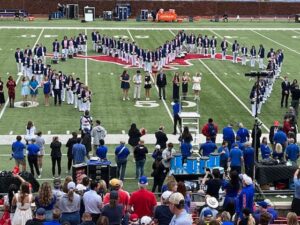 The last mystery was spotted by several. Jay Altman of Columbia, S.C. told us: “It is Gerald Ford Stadium at Southern Methodist University in Dallas, Texas. The stadium is named after Gerald J. Ford, a billionaire banker who provided most of the funding for its construction. Outside the northeast corner of the stadium is Doak Walker Plaza, honoring the former Heisman Trophy winner and SMU’s greatest football star.”
The last mystery was spotted by several. Jay Altman of Columbia, S.C. told us: “It is Gerald Ford Stadium at Southern Methodist University in Dallas, Texas. The stadium is named after Gerald J. Ford, a billionaire banker who provided most of the funding for its construction. Outside the northeast corner of the stadium is Doak Walker Plaza, honoring the former Heisman Trophy winner and SMU’s greatest football star.”
George Graf of Palmyra, Va. wrote: “Some famous SMU football players include Eric Dickerson, RB; Raymond Berry, WR; Forrest Gregg, OT/G; Doak Walker, RB/DB; Dandy Don Meredith, QB; and Kyle Rote, RB/WR.”
Susan McBrayer of Sugar Hill: “I learned an interesting thing about SMU’s band shown in the mystery photo. I thought the band was interestingly dressed (not your typical band uniforms) and I found out the university’s band is considered to be the best dressed band in college football with more than 30 unique uniforms! How cool is that?!”
Others making the identification included D.H. Malcolm, Duluth; Matt Willis, Lawrenceville; Dan Mackaben, Crystal Lake, Ill.; Lou Camerio, Lilburn and Allan Peel of San Antonio, Tex. The photo came from Chuck Paul of Norcross, who is a graduate of SMU.
- SHARE A MYSTERY PHOTO: If you have a photo that you believe will stump readers, send it along (but make sure to tell us what it is because it may stump us too!) Send to: elliott@brack.net and mark it as a photo submission. Thanks.
It takes lots of hands to hold all these Duluth awards!
You need lots of hands to hold all the 12 awards that the City of Duluth won in the Southeastern Festivals and Events Association meeting at Jekyll Island, Ga. recently. That included four gold awards, five silver and three bronze awards for such events as Howl on the Green, to Frosty Fun to recognition for the Rogers Bridge re-opening. Holding onto the awards are Talore Ruedt, Jessica Gross, and Victoria Matsota from the City Hall staff. For more information about these and other events, visit www.duluthga.net/events.
Prominent authors talk at the Hooper-Renwick Feb. 22
![]() Hear two prominent authors as speakers at the Hooper-Renwick speaker series on Thursday, February 22 at 7 p.m. The speakers are Victoria Christopher Murray and her fellow author and friend, ReShonda Tate, among the top African American authors. A reception will begin at 6 p.m. The event will be at the Lawrenceville Arts Center, 125 North Clayton Street. Two graduates from the former Hooper-Renwick School, Dr. John Maxey and Joyce Moore, will talk about the history and significance of the school.
Hear two prominent authors as speakers at the Hooper-Renwick speaker series on Thursday, February 22 at 7 p.m. The speakers are Victoria Christopher Murray and her fellow author and friend, ReShonda Tate, among the top African American authors. A reception will begin at 6 p.m. The event will be at the Lawrenceville Arts Center, 125 North Clayton Street. Two graduates from the former Hooper-Renwick School, Dr. John Maxey and Joyce Moore, will talk about the history and significance of the school.
Meet Author Dianne M. Sewart on February 22 at 7 p.m. at the Snellville Branch of Gwinnett County Public Library. Her Obeah, Orisa, and Religious Identity in Trinidad is an expansive two-volume examination of social imaginaries concerning Obeah and Yoruba-Orisa from colonialism to the present. Books will be available for sale and signing.
A program on at-risk communities will be Friday, February 23 at 8:30 a.m. at Corners Outreach Auditorium, 1854 Shackleford Court, Norcross. Come to learn about the groundbreaking findings of the Child Well-being Index 2023, and the state of the children in Gwinnett. It is sponsored by United Way of Greater Atlanta.
EXIT, Pursued by a Bear will be presented February 23-25 at the Lawrenceville Arts Center’s Peach State FCU Studio Stage. It is based on Shakespeare’s most famous stage direction, from A Winter’s Tale. Friday and Saturday shows are at 8 p.m.; Sunday at 2 p.m. Tickets are $20 in advance or $25 at the door. Run time is just under 90 minutes with no intermission. Seating is limited; advance purchase is highly encouraged.
Interested in a more vibrant and walkable community in Southwest Gwinnett? Drop in to share your thoughts on the Mountain Park Revitalization Plan at a design workshop on Tuesday, February 27 from 5:30 to 7:30 p.m. at Mountain Park First Baptist Church, Building C, at 5485 Five Forks Trickum Road. To learn more about this study, visit GwinnettCounty.com/SafeAccesstudy.
GwinnettForum is provided to you at no charge every Tuesday and Friday.
Meet our team
- Editor and publisher: Elliott Brack, 770-840-1003
- Managing editor: Betsy Brack
- Roving photographer: Frank Sharp
- Contributing columnist: Jack Bernard
More
- Mailing address: P.O. Box 1365, Norcross, Ga. 30091
- Work with us: If you would like to learn about how to be an underwriter to support the publication of GwinnettForum as a community resource for news and commentary, please contact us today.
Subscriptions to GwinnettForum are free.
- Click to subscribe.
- Unsubscribe. We hope you’ll keep receiving the great news and information from GwinnettForum, but if you need to unsubscribe, go to this page and unsubscribe in the appropriate box.
© 2024, Gwinnett Forum.com. Gwinnett Forum is an online community commentary for exploring pragmatic and sensible social, political and economic approaches to improve life in Gwinnett County, Ga. USA.


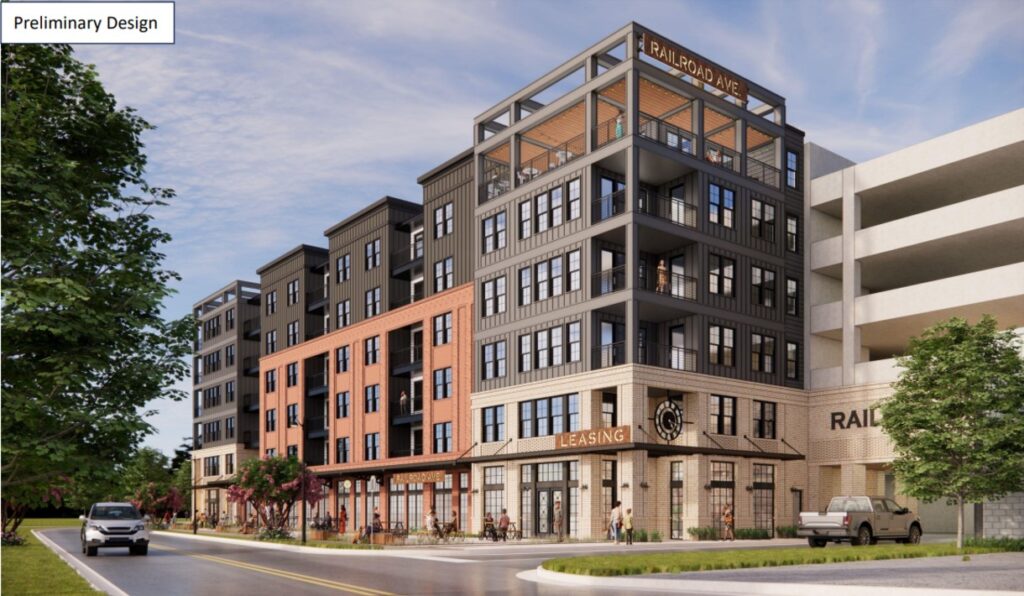


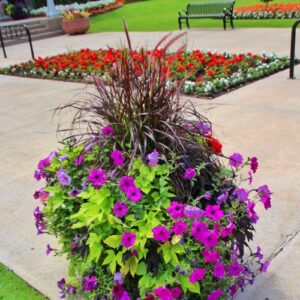





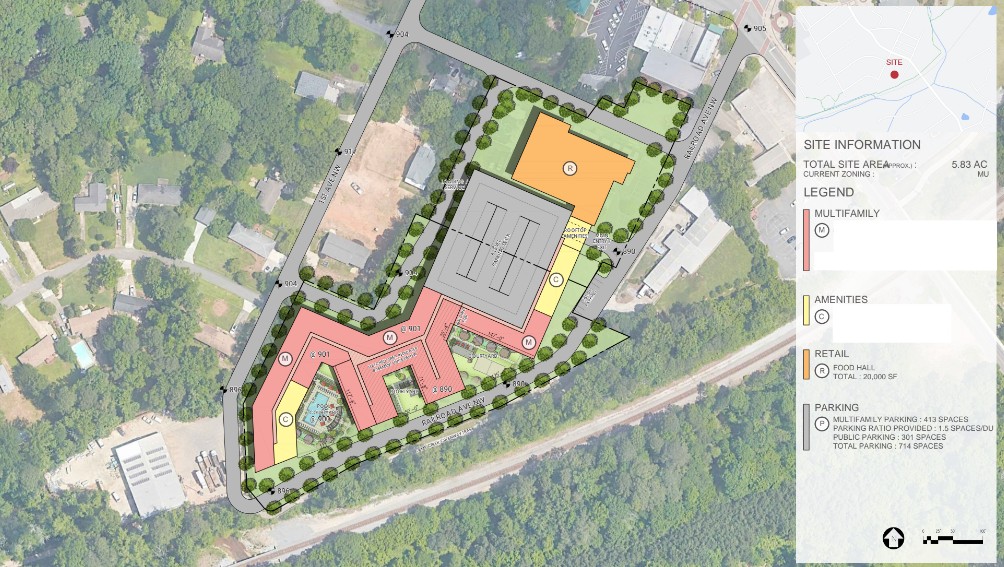
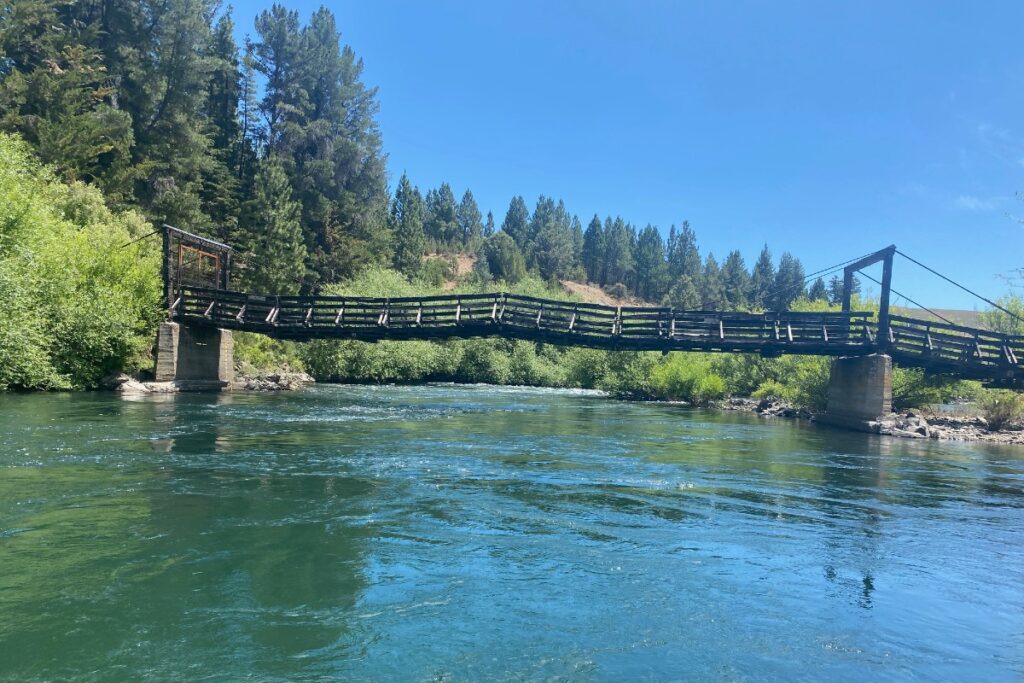
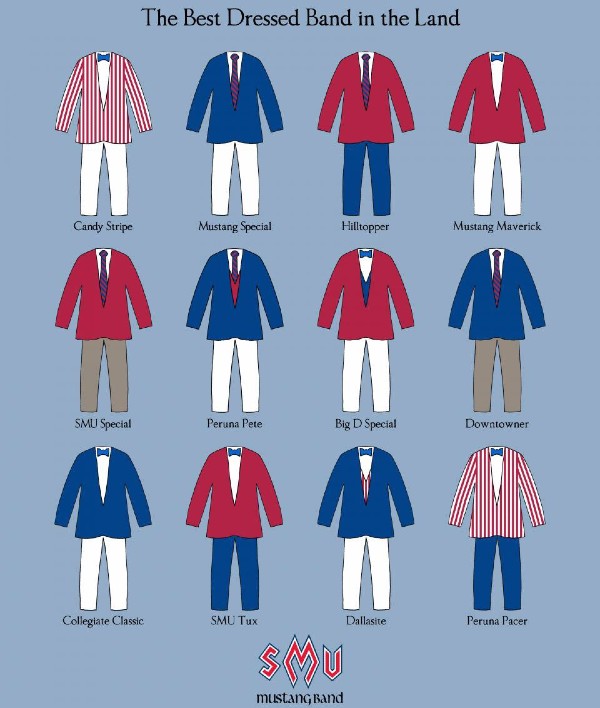
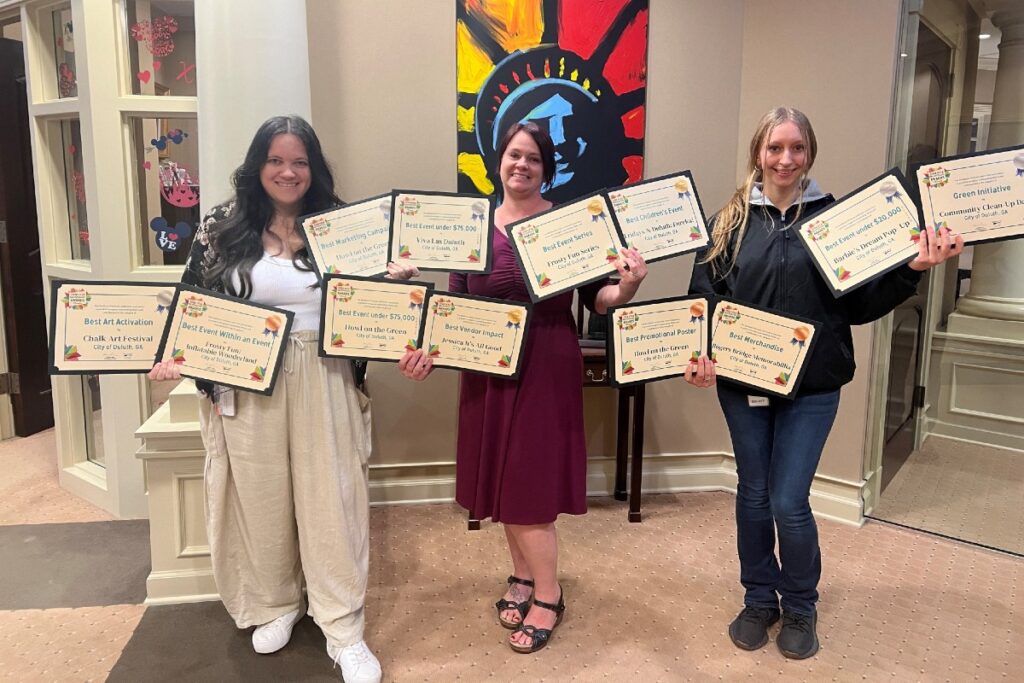







Follow Us